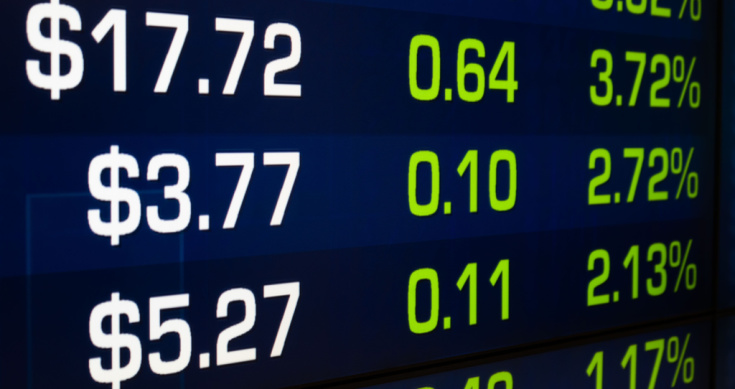Economy and Indices
The Australian market and most developed countries have bounced from their lows mid-week is down this week. So far these markets are set to close higher this week (at the time of writing). The Chinese market is up a notable amount more than the other developed countries share markets
US Federal Reserve increased interest rates 25bp, or 0.25%.
Sectors
Sectors on the ASX are a classification which is given to each listed company to describe the industry group they operate within.
The top three sectors this week were:
1. Telecommunications
Telstra (TLS) dominates this sector with a staggering 78% weighting. It is fair to say that where TLS goes, the Telcos go. While this has been the strongest sector on the ASX for the last 5 days, it has also been the second strongest sector over the last 5 years.
What is worth noting is that Vocus (VOC) and TPG (TPM) are up 500% and 675%, respectively, over the last 5 years, This compares to TLS up 200% over the same period. Despite the capital growth in both VOC and TPM, both companies still have low weighting to the sector as a whole.
2. Gold
Newcrest (NCM) dominates this sector with about 50% weighting, however there is a reasonable spread for the remainder.
The leading, mid-sized, Gold shares this year have been NST, SBM and RRL., however RRL has been the stand-out performer up 15% this week.
3. Consumer Staples
Woolworths (WOW) and Wesfarmers (WES, ‘Coles’) dominate this sector. WES and WOW are up 4.5% and 6.6% respectively this week of these companies were coming off low bases from last week and their bounce back has taken this sector to the top groups.
4. Property
Also known as ‘AREITs’ (XPJ) and is fairly well spread across the sector. This sector is rather defensive with consistent yields and rather steady asset/company values. With the low interest rate environment in AU and the ‘Yield Compression’ of 2015, this sector has performed reasonably well. However, since the Big 4 Banks dropped out of favor in April 2015 this sector has stopped rising and churned sideways, somewhat better than the overall ASX.
5. Industrials
This sector has been re-shaped since the mining and mining services industry fell out of favour after 2008. Industrials are now led by transport companies, representing seven of the 10 largest in this sector. This means the Industrials sector often represents and ‘inverse-oil’ trade and its performance can be dictated by the price of oil. Other large Industrial shares have a positive exposure to the USD. Together these two biases make this sector less of a representation of the Industrials’ performance in AU, but a function of the USD and oil prices.
The largest names and best performers in the sector are MQA, SYD, QAN, TCL and AIO.
The Weakest sectors were:
1. Energy (oil and gas)
Energy is a cyclical sector and its performance is often a function of the world prices for oil and gas commodities. In the context of the last year, oil prices performed reasonably well this week, however that performance was also the ‘least best’ on the ASX this week.
Interestingly this week has seen a large number of questions asking whether Santos (STO) is now good value, or cheap enough to buy. STO is currently around $3.50.
2. Financials (Excluding Property)
Financials (ex. Property (XXJ)) is dominated by the Big 4 Banks. Because of the Big 4 Banks’ dominance on the XJO this reinforces the ‘Beta’ driven market moves of this sector, which means because of XXJ’s sheer size on the XJO, it’s difficult for either index to move in the opposite directions.
Recently there has been a de-coupling of the large banks in Australia; CBA and WBC have recovered more than ANZ and NAB. This shows a higher risk has been attached the latter two, which appears to be attributed to a risk of raising more capital. This year Bank of Queensland (BOQ) is the leader is the banking group by a long margin.
3. Industrials
This sector has been re-shaped since the mining and mining services industry fell out of favour after 2008. Industrials are now led by transport companies, representing seven of the 10 largest in this sector. This means the Industrials sector often represents and ‘inverse-oil’ trade and its performance can be dictated by the price of oil. The other large Industrial shares have a positive exposure to the USD.
Together these two biases make this sector less of a representation of the Industrials’ performance in AU or the ASX in general (‘Beta’), but a function of the USD and oil prices.
As oil has a reasonably flat week, this transpires into the Industrials having a relatively mute week. Considering the bounce in the ASX this week, it is little surprise that Industrials are one of the ‘least best’, like the Energy sector this week.
The largest names and best performers in the sector are MQA, SYD, QAN, TCL and AIO.
Segments
Segments are the classifications given to companies of similar sizes for their market capitalisation (total company value by share price).
Within the ASX Top 200, the segments are:
– The 50 largest (‘Fifty Leaders’) and generally called the ‘blue-chip’;
– The next 50 companies (from 51 to 100th largest) are the ‘Mid-cap’ shares; and
– The last 100 of the Top 200 (from 101 to 200th) are the Small-caps’.
After almost two weeks of consecutive falling, the ASX has ‘bounced’ off the 4900 (round numbers) level. This ‘initial burst’ is often a ‘Beta drive’ – meaning the index rally is driven by the largest companies on the market, or recent ‘leaders’.
This burst happens because after excessive falls, money floods into the share market with less tact and more speed – sending money to the biggest, ‘safest’ names. This works for day traders and swing traders (aiming for 3-7 day trades), however most of the shares that benefit from this initial burst fall to the way-side if the rally is not strongly sustained.
This week the Segments reflected a text-book Beta drive. The largest segments were up the most, while the smallest were up the least. However there was very little separating the top performing segments form the bottom performing ones.
Market Darlings:
These are the shares we all wish our portfolios were filled with – the leading shares of the leading groups on the ASX.
|
Security |
Description |
Economic Sector |
Market Cap ($m) |
|
ALL |
Aristocrat Leisure |
Consumer Discretionary |
6104 |
|
APO |
Apn Outdoor Grp |
Consumer Discretionary |
926 |
|
BAP |
Burson Group Ltd |
Consumer Discretionary |
959 |
|
CKF |
Collins Foods Ltd |
Consumer Discretionary |
346 |
|
DMP |
Domino Pizza Enterpr |
Consumer Discretionary |
4327 |
|
MTR |
Mantra Group Ltd |
Consumer Discretionary |
1159 |
|
SLK |
Sealink Travel Grp |
Consumer Discretionary |
371 |
|
A2M |
The A2 Milk Company |
Consumer Staples |
706 |
|
BAL |
Bellamy’S Australia |
Consumer Staples |
1035 |
|
BGA |
Bega Cheese Ltd |
Consumer Staples |
887 |
|
BKL |
Blackmores Limited |
Consumer Staples |
3180 |
|
CZZ |
Capilano Honey Ltd |
Consumer Staples |
195 |
|
ELD |
Elders Limited |
Consumer Staples |
373 |
|
TWE |
Treasury Wine Estate |
Consumer Staples |
5669 |
|
BLA |
Blue Sky Limited |
Financials |
379 |
|
BTT |
BT Investment Mngmnt |
Financials |
3808 |
|
CGF |
Challenger Limited |
Financials |
4930 |
|
EGH |
Eureka Group Ltd |
Financials |
128 |
|
HFA |
HFA Holdings Limited |
Financials |
509 |
|
HUB |
HUB24 Ltd |
Financials |
178 |
|
API |
Australian Pharm. |
Health Care |
1017 |
|
EHE |
Estia Health Ltd |
Health Care |
1401 |
|
PME |
Pro Medicus Limited |
Health Care |
351 |
|
IPH |
IPH Limited |
Industrials |
1352 |
|
SGF |
SG Fleet Group Ltd |
Industrials |
886 |
|
SIQ |
Smartgrp Corporation |
Industrials |
374 |
|
SYD |
SYD Airport |
Industrials |
14670 |
|
ADA |
Adacel Technologies |
Information Technology |
155 |
|
APX |
Appen Limited |
Information Technology |
167 |
|
ASZ |
ASG Group Limited |
Information Technology |
242 |
|
FLN |
Freelancer Ltd |
Information Technology |
767 |
|
NTC |
Netcomm Wireless |
Information Technology |
400 |
|
PRO |
Prophecy Internation |
Information Technology |
152 |
|
SMA |
SmartTrans Holdings |
Information Technology |
150 |
|
TNE |
Technology One |
Information Technology |
1404 |
Leading Market Themes
Consumer Discretionary shares have continued to perform well, notably: professional services, auto companies, food, media and entertainment companies. There are significantly more Consumer Discretionary shares in the Mid-Cap index (XMD) than the Top 50 (XFL) which has helped the Mid-Caps to continue to provide strong returns over the last six months. Given the small weighting the Mid-caps have on the XJO, the positive movements over the last few months have been negated by the largest companies in the XJO.
Technology companies, mostly software/‘cloud’ related and non-physical solutions, are providing the strongest returns on the ASX. A lot of these companies are small and mirco-caps and some are not even in the All Ords index (XAO).
Retirement related services also continue on a steady rise. These shares range from retirement homes, healthcare facilities and ageing services and technologies.
Wealth Managers are another strong, but less prominent theme, while Food related producers/distributors are also performing well although are only represented by small market capitalised companies.









